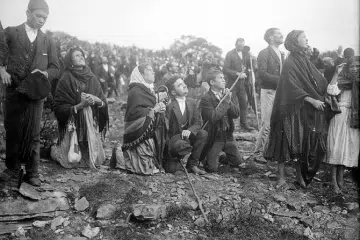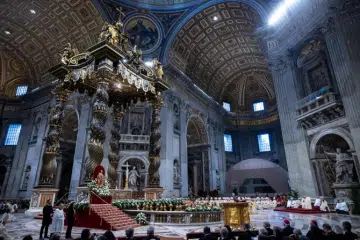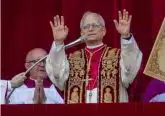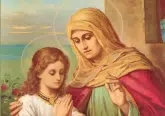Mary, Ark of the Covenant
 I have heard of many titles for Mary, but one I do not understand is “Ark of the Covenant.” What does that mean?
I have heard of many titles for Mary, but one I do not understand is “Ark of the Covenant.” What does that mean?
The designation of Mary as “Ark of the Covenant” may seem puzzling at first, yet this lesser-known title for the Blessed Virgin is rooted in scripture and tradition. It bridges both the Old and New Testaments and reminds us of St. Augustine’s adage about the two parts of the Bible: “The new is in the old concealed; the old is in the new revealed.”
THE ANCIENT ARK
The Old Testament presents the Ark of the Covenant as an elaborate gold-plated wooden chest constructed to precise divine specifications. It housed the tablets of the Ten Commandments, a jar of manna and Aaron’s staff. The ark served as a tangible representation of God’s covenant and presence among His people (Ex. 25:10-22; Heb. 9:4).
The last mention of the ark is in 2 Chronicles during the reign of King Josiah (7th century B.C.). What became of the ark is not known. Traditions vary, but some believe it may have been buried beneath the Temple Mount in Jerusalem before the temple’s destruction.
THE NEW COVENANT
The covenant — between God and the people of Israel — was fulfilled in Jesus. Through this new covenant, Jesus’ life, death and resurrection offer salvation to humanity. Mary assumes a unique role in this covenant, carrying not stone tablets (indicative of the old covenant), but the living Word incarnate — Jesus Christ, the Son of God.
In the new covenant, Mary is the new ark. As the Catechism relates, “Mary, in whom the Lord himself … made his dwelling, is the daughter of Zion in person, the ark of the covenant, the place where the glory of the Lord dwells” (CCC 2676). Because she became the dwelling of God and has a special role in the incarnation, she is called Theotokos or “God-bearer.”
SHARED SYMBOLISM
Both Mary and the ark point to realities beyond themselves. The ancient ark, for instance, housed manna and Aaron’s staff, similar to Mary carrying within her Jesus: the Bread of Life and the high priest of the new covenant. Both Mary and the ark symbolize holiness and purity. Crafted from pure materials, the ark was deemed holy; similarly, Mary, chosen to be the Mother of God, is revered as divinely favored (Lk. 1:28).
Additional scriptural parallels emerge when Mary visits her cousin Elizabeth. Just as David journeyed to retrieve the ark, Mary hastily traveled to see Elizabeth (2 Sam. 6:2; Lk. 1:39). Elizabeth’s response to Mary’s arrival mirrored David’s reverence before the ark (Lk. 1:43; 2 Sam. 6:9) and John the Baptist’s leaping in Elizabeth’s womb suggested David’s joyful dance (2 Sam.6:16; Lk. 1:41). And as the ark stayed three months in the house of Obed-Edom, Mary remained three months with Elizabeth (2 Sam. 6:11; Lk. 1:40, 56).
In the Book of Revelation, the ark also appears briefly (Rev. 11:19). As the ancient ark protected Israel, the ark is mentioned just one verse before the reference to “a woman clothed with the sun” (which tradition often linked to Mary). She, like the Ark of the Covenant, contains within her Jesus, the great power against evil.
FULFILLMENT OF GOD’S PLAN
Mary’s designation as the Ark of the Covenant highlights her integral role in redemption. She serves as a bridge between the old and the new, underscoring her unique role in bearing Jesus, the mediator of the new covenant (Heb. 9:15). Mary is the ark God chose to bear His presence on earth: the Word made flesh and the fulfillment of God’s plan for humanity.
 Father David Endres is professor of Church history and historical theology at Mount St. Mary’s Seminary & School of Theology.
Father David Endres is professor of Church history and historical theology at Mount St. Mary’s Seminary & School of Theology.
This article appeared in the May 2024 edition of The Catholic Telegraph Magazine. For your complimentary subscription, click here.













